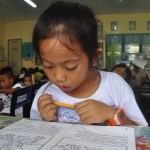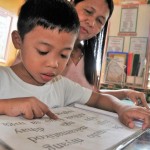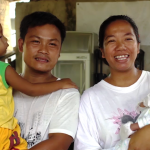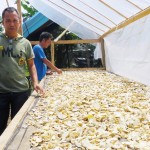Speeches Shim

Crisha*, 7, lives on a remote islet called Silagon in the Philippines’ central region of Cebu. Electricity, fresh water and produce are scarce and expensive for the 300 people who live there. Families must frequently visit the main island of Bantayan — about 40 minutes away by boat — to get basic necessities.

Last year, John could not read the alphabet. Worried that he might have a learning disability, John’s mother, Chesa*, nearly pulled him out of first grade to retake kindergarten. But John’s teacher, Ruffa Maboloc, persuaded Chesa to let John stay in her class because he was clearly committed to learn.

When Ailleene Joy Verbo was a child, she loved listening to her grandfather’s solar-powered radio. “Our rural village did not have electricity,” she said. “The radio broke the quietness of the day.”

Throughout Estela Tudio’s first pregnancy in 2013, she worried about medical expenses. Estela, a homemaker in Bayambang — a town in the Philippines’ northern region of Luzon — and her husband, Almar, who earned $6 (300 Philippine pesos) per day as a tricycle driver, could not afford birth at a hospital. So Estela gave birth at home.

Samat Nasa has been farming cassava on the outskirts of Zamboanga City in the Philippines’ Mindanao region for over 30 years. Many farmers in the area grow this root crop because it is easy to maintain and can survive extreme weather. But because the Philippines is a predominantly rice-consuming nation, Nasa has only sold his harvests to a handful of local producers of panggi, a customary staple food made of grated cassava.


Comment
Make a general inquiry or suggest an improvement.